When you’re getting paid to perform, every workout counts. The pros know the only way to really optimize your training is to make sure you’re recovering just as hard. And the easiest way to do that? Sleep it off.
Sleep may be the single most important factor in exercise recovery, according to a study in the International Journal of Sports Medicine. A supplement like Beam Dream—which contains CBD, nano cbd, l-Theanine, magnesium, and other sleep-inducing ingredients—can help you get better shuteye so you can show up the next day ready to work.
These elite athletes incorporate Dream into their nightly routines (instructions are simple: mix one scoop of dream powder with a cup of warm milk or water and enjoy 20-30 minutes before bed), and claim the benefits are clear when they hit the track.
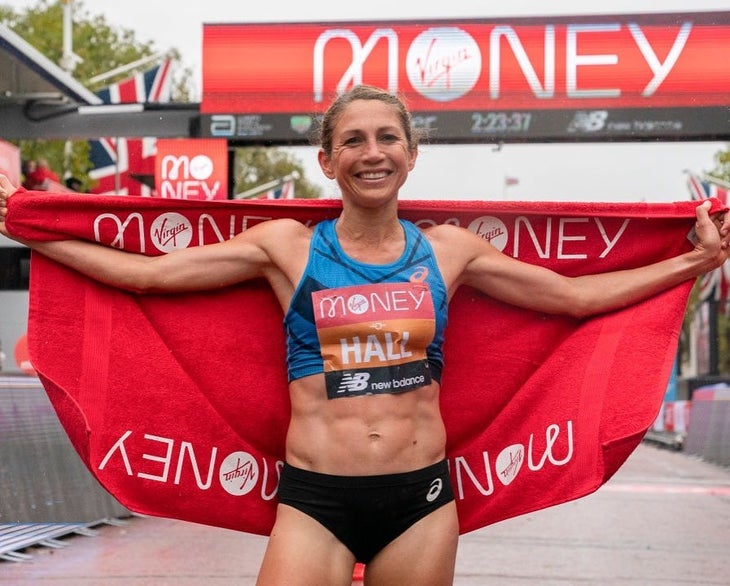
Sara Hall
The 38-year-old distance runner finished second place at the London Marathon in October 2020 and clocked the second-fastest marathon time ever by an American woman in December 2020. She’s training for the 10,000-meter race at the USATF Olympic Trials on June 26.
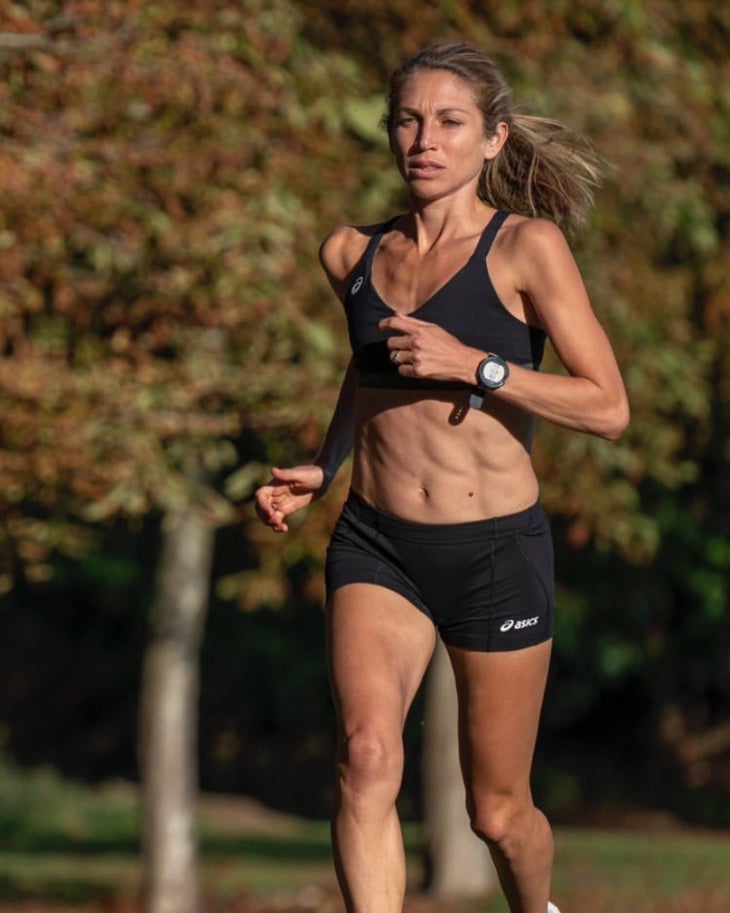
When Sara Hall debuted in the marathon distance in 2015, she ran a 2:48:02. Five years later, she clocked the second-fastest marathon time ever by an American woman: 2:20:32. She attributes a huge part of her current successes to one thing: recovery.
“I see recovery as an art—a craft I’m constantly fine-tuning,” Hall says. “When I’m in full marathon training, I’m running 130 to 140 miles a week with a lot of intensity. I can only sustain that and not get injured if I’m recovering to the best of my ability.”
The number one aspect of recovery that she focuses on? Sleep. “It’s the greatest performance enhancer,” she says. “I protect my sleep like nothing else. I will train less if it means I wouldn’t get enough sleep otherwise.”
But Hall says she isn’t naturally a great sleeper, which is why she turned to Beam Dream. “When I moved to high altitude, that really disrupted my sleep, which derailed my recovery and in turn my performance,” she says. With CBD, which calms inflammation caused by training; the amino acid L-theanine, which helps her wind down; and magnesium, which relaxes her hard-working muscles, “it’s a great ritual at bedtime to cue my body that it’s time to sleep,” says Hall.
Dominique Scott
The 28-year-old South African long-distance runner represented South Africa at the 2016 Summer Olympics and has qualified for the 2021 Games in the 5,000-meter distance. She’s also competing to qualify for the 10,000-meter team.
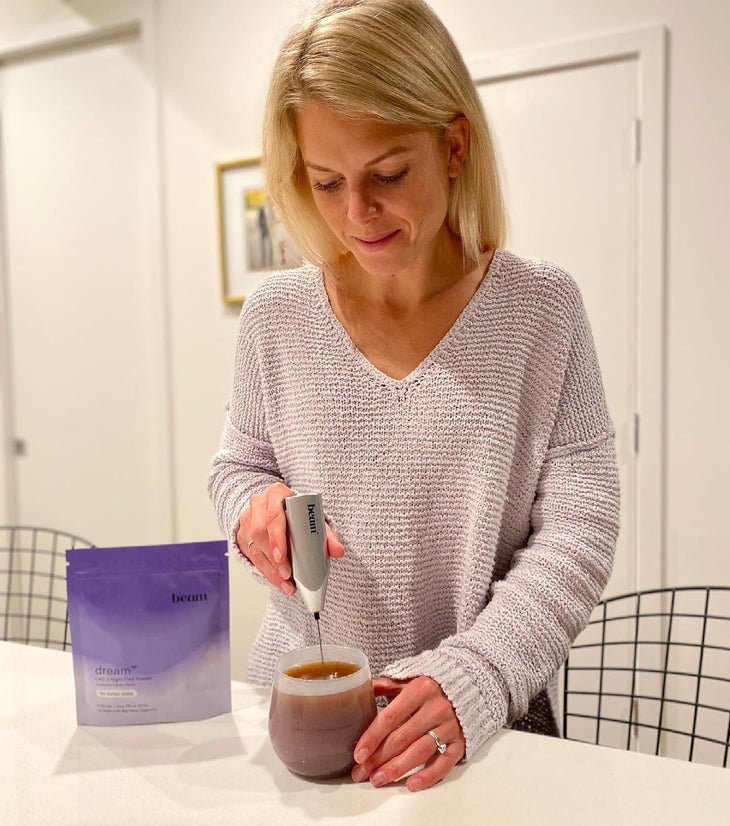
Since Dominique Scott turned pro in 2016, she’s started prioritizing sleep. “As a professional athlete, you want to be training as much as possible to make the most of the time that you have. Sleep, in that case, isn’t just about going to bed, she explains. “You’re giving your body time to heal itself and reap the benefits of the hard work you’ve put in. Now that I understand that, I respect sleep a lot more.”
To that end, Scott invested in black out curtains for her bedroom, uses a white noise machine and eye mask, and keeps her room nice and cool—all standard sleep hygiene measures. In January, she introduced Dream to her routine.
“I’m looking for every way that I can optimize my recovery, and Dream is something that guarantees I get a good night’s sleep every night,” Scott says. “A lot of times after a big day of training, my mind and body are still in fight or flight mode all day. Dream helps me flip that switch so I can show up to my workout the next day feeling refreshed and ready.” She also just ran her first race of 2021 and clocked a personal best—so the proof is in the powder.
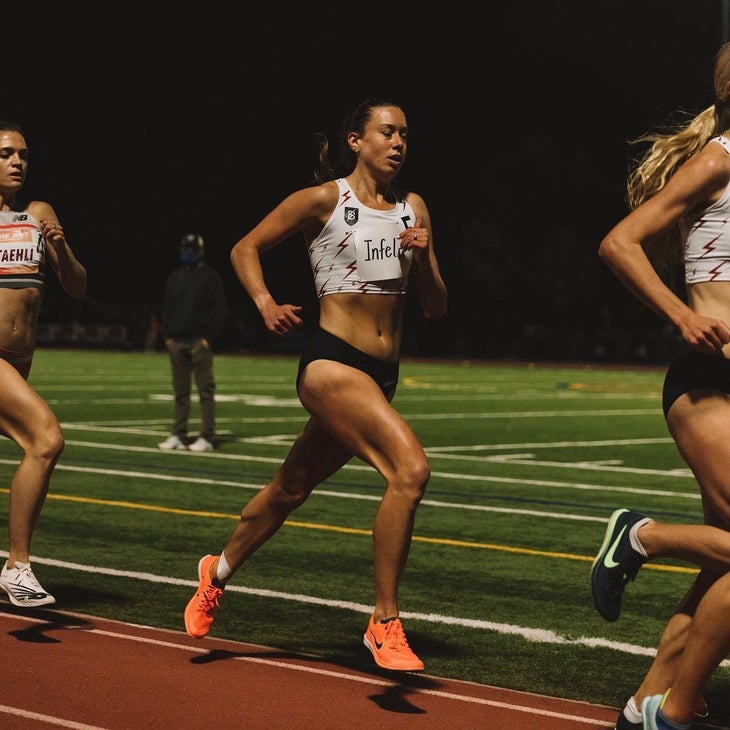
Emily Infeld
The 31-year-old long-distance runner competes professionally in the 5000-meter and 10,000-meter distances; she’s training for the 10,000-meter race at the USATF Olympic Trials on June 26.
Over the past decade as a professional athlete, Infeld has dealt with her fair share of injuries, from hip surgery at the start of 2019 to a hip stress fracture in spring 2020 and hamstring issues that fall. “I’ve been doing this same repetitive motion for so long,” she says. “In a 20-year-old body, you recover way faster. Now, I really have to make sure everything is dialed so I don’t get hurt.”
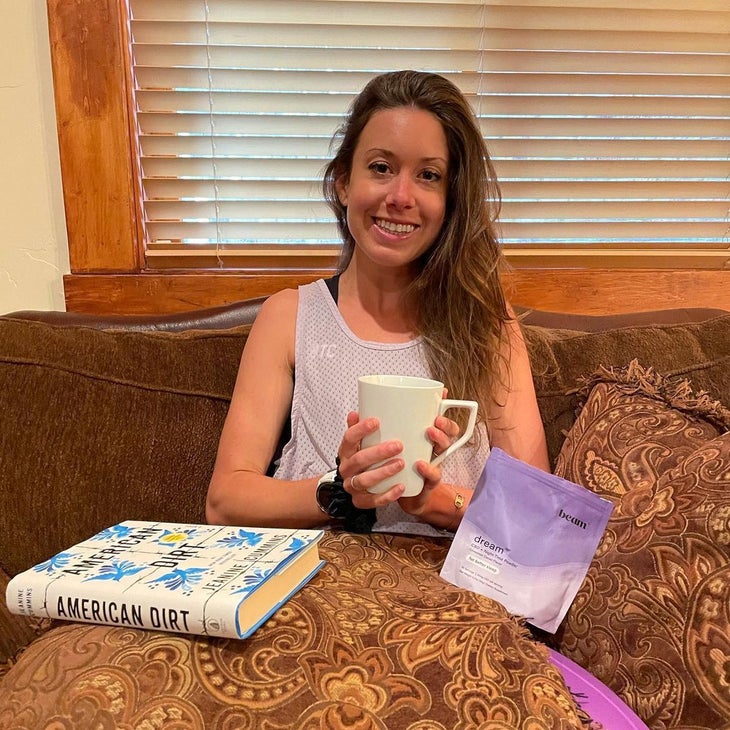
And she knows the way to do that is a good night’s sleep. “I aim for nine or even nine and a half hours a night,” she says. “I’ve been really good about developing a routine: I brush my teeth, I read for at least 10 minutes, then I meditate for five minutes; when I’m ready to sleep, I turn on a sound machine and put on an eye mask.”
Since February, she’s started her night time wind down with Dream. “I’m definitely someone who struggles with a lot of stress and anxiety, and that leads to bad sleep for me,” she says. “Dream has really eliminated those racing thoughts before bed, so I feel calm and relaxed and can get to sleep easier.”
More importantly, that better sleep has translated to performance. “What I’ve really noticed is that I’ve stayed healthier—this has been my longest stretch of healthy training,” she says. “I’ve been pushing my body really hard, but I’m staying pretty healthy. And that’s such a relief.”
A good night’s sleep is the training essential that could help you push it to the next level. Prepare like an elite athlete and receive 20% off, plus a free mug and frother with your Dream subscription, Beam offers flexible delivery schedules, and free shipping, always.